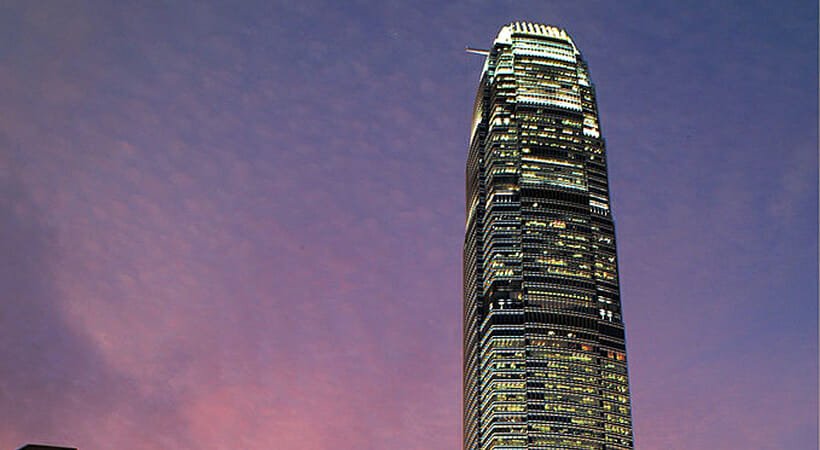Two International Finance Centre (2 IFC) is the second tallest building in Hong Kong and the nineteenth tallest building in the world as ranked by the Council on Tall Buildings and Urban Habitat. Rising 412 meters (1,352 feet) above Victoria Harbour, 2 IFC features more than 185,000 square meters (2 million square feet) of floor space.
Structural engineering firm Arup hired CPP to answer key questions about wind loads on 2 IFC. The tower is located at a unique crossroads of water, city, and mountainous topography, one of the world’s most complex wind environments. Characterizing the approach flow was a critical first step in calculating wind loads for this impressive structure.
To this end, CPP’s engineers and atmospheric scientists measured wind speeds on a 1:4,000 scale topographical model of Hong Kong and found three wind patterns that dominate the 2 IFC site:
- Wind approaching from over the water
- Wind approaching through highly developed urban areas
- Wind approaching from the wake behind Victoria Peak
The wind on the leeward side of Victoria Peak, in particular, demonstrated the value of scale model wind tunnel testing for this project. The peak creates an unstable flow that at times shelters 2 IFC and at other times intensifies the wind loads.
Having obtained a comprehensive understanding of 2 IFC’s wind environment, our engineers next designed and built a 1:500 scale model of the tower and of all buildings within 710 meters (2,300 feet). Using a smoke wand to visualize the critical flow patterns around the building, we found that 2 IFC wouldn’t just experience wind loads from direct buffeting, but also from self-induced vortex shedding, a complex phenomenon that can cause a building to violently shake if not properly understood and mitigated.
Wind tunnel testing confirmed what visual inspection with the smoke wand suggested, and we delivered critical structural response information to Arup to ensure that 2 IFC would effectively withstand Hong Kong’s complex wind environment.
Construction on 2 IFC began in 2000 and was completed in 2003. To measure the tower’s actual responses to a major wind event, CPP’s Dr. Roy Denoon spent the night on the 88th floor with field instrumentation during the first typhoon to hit the building. The live measurements validated the wind-tunnel predictions.
We are proud to have contributed our expertise to this iconic skyscraper.

